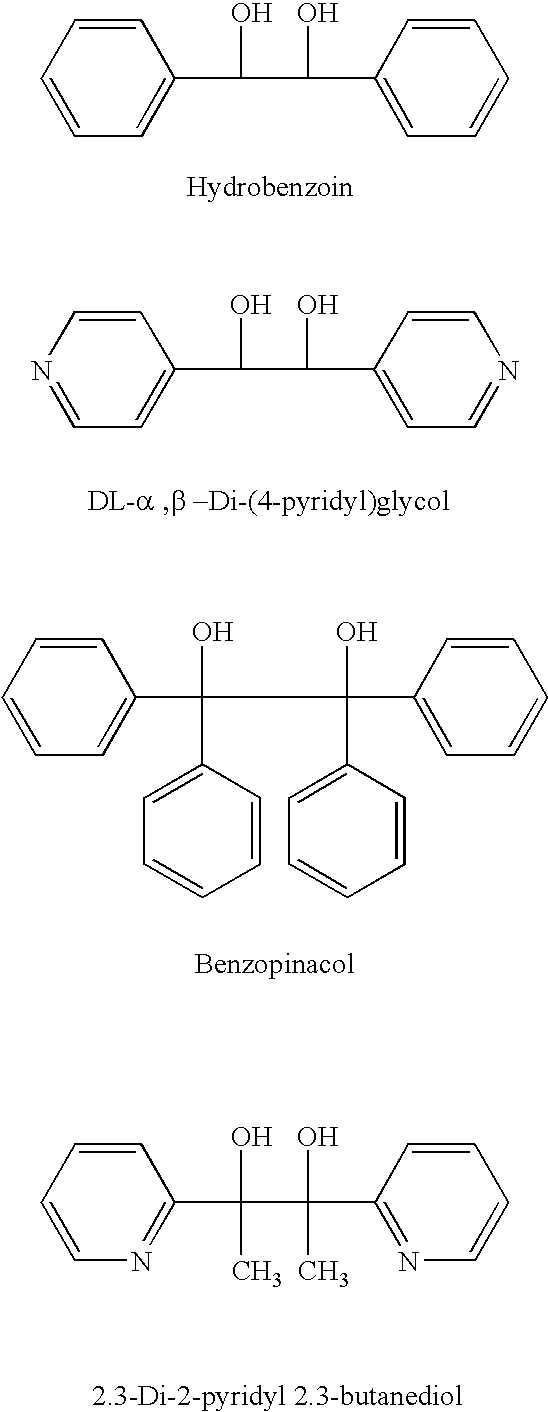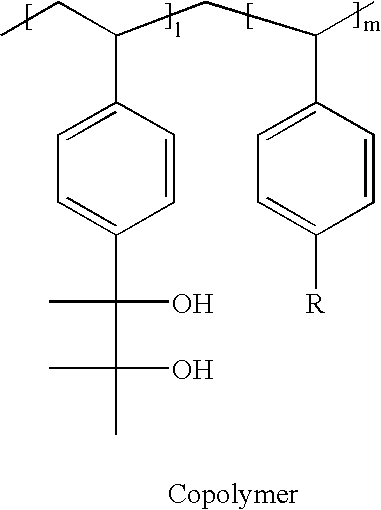Micropattern forming material, micropattern forming method and method for manufacturing semiconductor device
a technology of micropatterns and forming materials, which is applied in the direction of photosensitive material processing, photomechanical equipment, instruments, etc., can solve the problems of less pattern accuracy of finally formed thin films, and less resistance to etching. achieve good resistance
- Summary
- Abstract
- Description
- Claims
- Application Information
AI Technical Summary
Benefits of technology
Problems solved by technology
Method used
Image
Examples
example 2
[0136] A novolac resin and naphthoquinone diazide were dissolved in a solvent of 2-heptane to prepare an i-line resist, which was provided as a resist composition. Next, the resist composition was dropped on a silicon wafer and spin coated by use of a spinner. Thereafter, pre-baking was carried out at 85.degree. C. for 70 seconds to evaporate the solvent from the resist film. The resist film after the pre-baking had a thickness of about 0.8 .mu.m.
[0137] Next, the resist film was exposed to light by use of an i-line reduced projection-type aligner. Thereafter, the PEB treatment was carried out at 120.degree. C. for 70 seconds, followed by development with an alkaline aqueous developer (HMD3, made by Tokyo Ohka Kogyo Co., Ltd.) to obtain a resist pattern.
example 3
[0138] A novolac resin and naphthoquinone diazide were dissolved in a solvent consisting of ethyl lactate and butyl acetate to prepare an i-line resist, which was provided as a resist composition. Next, the resist composition was dropped on a silicon wafer and spin coated by use of a spinner. Thereafter, pre-baking was carried out at 100.degree. C. for 90 seconds to evaporate the solvent from the first resist film. The resist film after the pre-baking had a thickness of about 1.0 .mu.m.
[0139] Next, the resist film was exposed to light by use of a stepper, made by Nikon Corporation. Thereafter, the PEB treatment was carried out at 110.degree. C. for 60 seconds, followed by development with an alkaline aqueous developer (HMD3, made by Tokyo Ohka Kogyo Co., Ltd.) to obtain a resist pattern.
example 4
[0140] For a resist composition, a chemically amplified excimer resist, made by Tokyo Ohka Kogyo Co., Ltd., was used. Next, the resist composition was dropped on a silicon wafer and spin coated by use of a spinner. Thereafter, pre-baking was carried out at 90.degree. C. for 90 seconds to evaporate the solvent from the first resist film. The resist film after the pre-baking had a thickness of about 0.8 .mu.m.
[0141] Next, the resist film was exposed to light by use of a KrF excimer reduced projection-type aligner. Thereafter, the PEB treatment was carried out at 100.degree. C. for 90 seconds, followed by development with an alkaline aqueous developer of TMAH (NMD-W, made by Tokyo Ohka Kogyo Co., Ltd.) to obtain a resist pattern.
PUM
| Property | Measurement | Unit |
|---|---|---|
| thickness | aaaaa | aaaaa |
| thickness | aaaaa | aaaaa |
| thickness | aaaaa | aaaaa |
Abstract
Description
Claims
Application Information
 Login to View More
Login to View More - R&D
- Intellectual Property
- Life Sciences
- Materials
- Tech Scout
- Unparalleled Data Quality
- Higher Quality Content
- 60% Fewer Hallucinations
Browse by: Latest US Patents, China's latest patents, Technical Efficacy Thesaurus, Application Domain, Technology Topic, Popular Technical Reports.
© 2025 PatSnap. All rights reserved.Legal|Privacy policy|Modern Slavery Act Transparency Statement|Sitemap|About US| Contact US: help@patsnap.com



